




| Home | Features | Club Nights | Underwater Pics | Feedback | Non-Celebrity Diver | Events | 18 July 2025 |
| Blog | Archive | Medical FAQs | Competitions | Travel Offers | The Crew | Contact Us | MDC | LDC |

|

|
 
 |
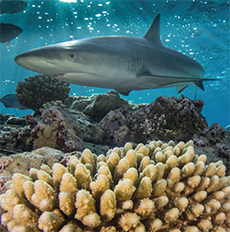 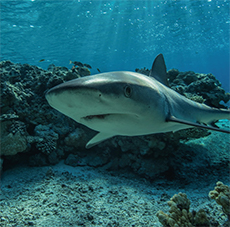 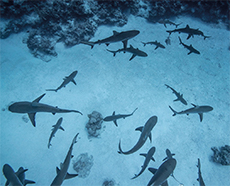 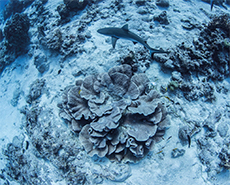 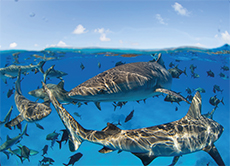 ISSUE 24 ARCHIVE - HIT!Paul RoseI started diving in 1969, have made thousands of dives in all kinds of challenging circumstances and I guess I had to get a decompression hit and boy, did I get one. And yet, at the time, it felt completely undeserved.One side of my memory is full of the fabulous position of Beveridge Reef. A remote and stunningly beautiful coral atoll surrounded by pounding South Pacific waves and the incredible flat – calm anchorage within the lagoon. Combined with the excitement and joy of diving the shark - rich waters of the lagoon passage this proved to be an idyllic target on our National Geographic Pristine Seas expedition to Niue. We joined large groups of sharks on all of our dives and were always accompanied by whale song. This is truly world class diving! But on the other side of my memory are the bald facts of my accident report: Pre-dive activities and health notes:I passed my annual HSE full dive medical at London Diving Chamber on 17th August 2016. I have been feeling healthy and fit. Exercising each day, eating well, sleeping well. The night before the incident I ate normally, had one light beer, slept well. The morning of the incident I felt good. Stretched out, carried the usual amount of gear, was very well hydrated and conditions were perfect. Incident dive profile:
Previous dive profile:
Incident description:A single dive using our new Zodiac, Aldabra, to the southern side of the entrance to Beveridge Reef. 2km from our expedition boat, Island Passage. Manu, our lead underwater cameraman and his assistant, Jose and I made a routine descent in good conditions to 28m. It was easy work as we had rigged a static buoy to aid the boat driver's positioning. There was a moderate current running, but we did not need to push against it during the descent. At the bottom Jose secured the bait container. Manu filmed as I swam with a group of ~24 grey reef sharks. I then stayed in position just off the bottom while Manu completed the filming. We all made a normal ascent next to our buoy line to 10m. Manu and Jose continued to the boat so that they were clear of the water when I ascended for Jon Betz, our topside cameraman, to film me. I continued my ascent to 5m and waited until Manu and Jose were in the boat and the boat was above me. I ascended to the boat. Removed my mask and delivered a piece to camera on the sharks. Removed my weights and scuba set, Jose lifted them in the boat. I pulled myself into the boat and as I arrived aboard I thought my right leg had snagged something as it didn't come into position. At the same time I felt the right leg and right arm go numb. I couldn't feel or move them. I said to Manu that "something is wrong" and he instantly set up the O2 from the DAN kit and put the mask on me. From surfacing to being on O2 was 2mins max. Manu, Jose and Jon helped to remove my wetsuit and make space for me to lie in the boat with my head down and feet on the Zodiac tube (Trendelenberg recommended position). I was clear headed throughout. Our boat driver, Kelsey, made way for the ship. Manu radioed for all others to be recalled. Manu and Jose continued to organise the other boats recall and advised Island Passage. They monitored me on O2 and fed me water. After ~5 mins I began to regain all feeling and movement. We arrived at our expedition boat, the Island Passage after a 15min boat journey. I was carried into the main saloon next to the Hyperlite recompression chamber, sat with feet up on a chair and given O2 from our main bank. I felt very close to 100% with full movement, sensation and strength. I had 2 x 300mg aspirins on arrival and a further 2 x 300mg 10mins later. I continued to drink water. During this time I breathed 2 x DAN O2 cylinders, 1 extra cylinder from Island Passage and ~20mins from the Hyperlite chamber O2 system before entering the chamber. Dave, our Diving Officer, gave me a thorough check and suggested a Table 5 treatment in the chamber which I readily agreed to. Once in the chamber the Table 5 treatment went well and was expertly run to the exact schedule. I had no discomfort during the treatment nor upon exiting the chamber. Once clear of the chamber Dave completed another check of me and also made sure that I peed again which was no problem. We finished the expedition as planned and I found it very hard indeed to not dive. On return to the UK:I met Oli at London Diving Chamber to review things and he arranged for me to have a series of tests to see if I had a PFO (Patent Foramen Ovale). I remember thinking "Could I really have a PFO? After all, I've been diving for all these years and have never had a problem. So why now?". The three ultrasounds and an MRI scan later and there I was making friends with a fully realized PFO. The reports from the scans are one thing but it's quite another during the ultrasound test to see bubbles appear on the left side of your heart. It took me a few months to decide what to do. I was very fit and healthy and was happily active walking, swimming, running, cycling, skiing, climbing, canoeing – everything except diving. My thinking was along the lines of "If a closure operation went wrong then would I lose all my fitness?" This feeling spooled up until Oli introduced me to Dr Mark Turner in Bristol as he has completed thousands of successful PFO closure operations. We met, I liked him, trusted him and immediately decided to go for the PFO closure procedure. Mark happily agreed to me being fully awake and alert during the procedure and so I had no sedatives or anaesthetic during what turned out to be a beautiful, life enhancing experience. Being wheeled into the operating theatre was a bit intimidating as Mark's team of about 12 people was bigger than I had expected and combined with all of the bristling, incomprehensible technology and a surprise quick shave of some of my pubic hair the scene was a serious one. A local anaesthetic in my groin meant that I couldn't feel the camera and instruments going into my leg and I was happy to have the representative of the company that make the closure devices next to me and Mark on the other side orchestrating proceedings. With the benefit of the camera inside me and an array of screens I could see everything and particularly enjoyed the precise, happy, professional chat as my PFO was measured by tiny balloon (5mm), the closure device selected (a 25mm pair of what look like miniature umbrellas or chimney brushes), and of course the final discussion to ensure that it was in the correct place and I could hear, see and sense that it had gone well. I highly recommend this as, rather than take a doctor's word that everything went well, you can see it for yourself. Very satisfying! My follow up check has been good, I feel terrific and yet still have to pass a successful bubble test in April which will clear me for diving. There's pressure on that test as I love to dive and am leading our next Pristine Seas expedition which is to Malpelo Island in the Pacific late April. My fingers are crossed! Previous article « Newfoundland or Wonderland? Next article » Exploring the World's Aquarium Back to Issue 24 Index |